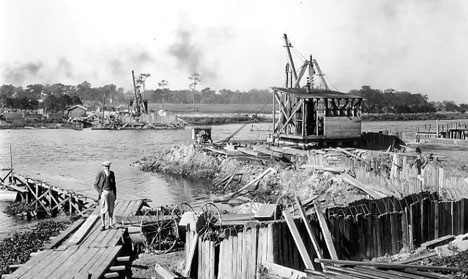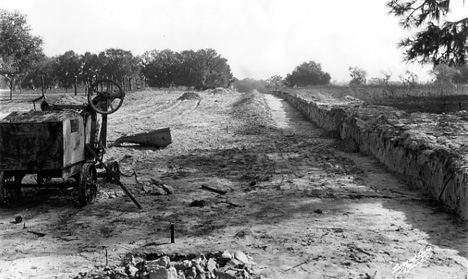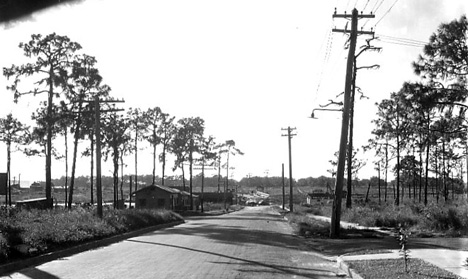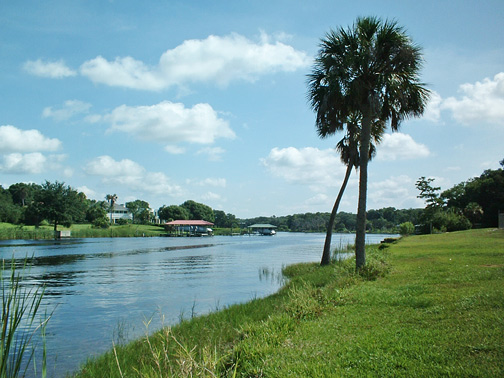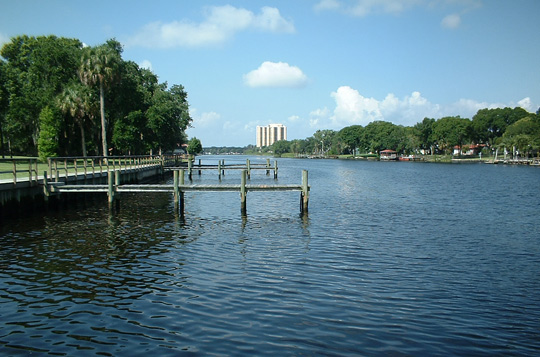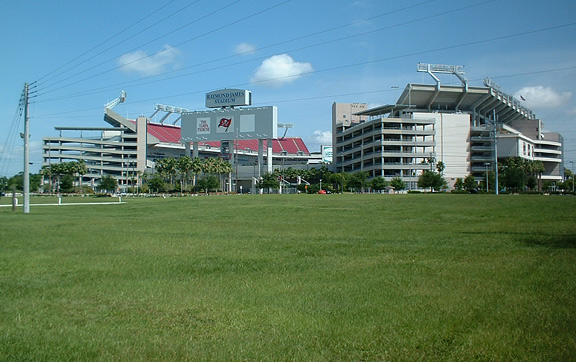|
The
Columbus Drive Bridge over the Hillsborough River, was completed in 1926
when Columbus Drive was called Michigan Avenue and this was the
Michigan Avenue bridge. The bridge was built by the Mount
Vernon Bridge Co. of Ohio and is one of two bobtail swing bridges in the
state and cost $420,000 to build. Michigan Avenue was named Columbus Drive
in 1933. The 88-year-old Columbus Drive Bridge is a bobtail swing bridge, which means it opens by pivoting off-center, a design used in canals and other narrow waterways to provide boats a wider berth. The 470-foot span has a bridge tender's house in a position which, today, is regarded as a major safety issue. From the bridge tender's house you can't see boats coming up and down the river. |
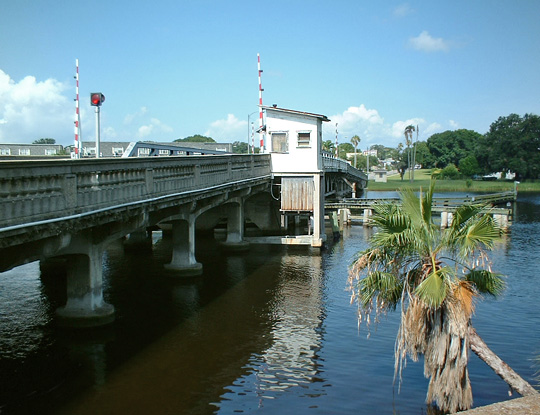 |
| Length of largest span: 163.1 ft. Total length: 470.2 ft. Deck width: 40.4 ft. |
|
|
Originally, the tender emerged from the
house, wired controls in hand, to
trigger the opening of the bridge from outside, where a clear line of
sight was available. Designers came up with a unique solution to retain
the original position and look of the house while providing necessary
visibility. Design work for refurbishing the Columbus Drive Bridge
is expected to be completed by year's end.
Looking east |
|
Plans include:
•Demolishing the tender house and replacing it with a historically accurate building; a second story designed as a clear glass tube will be added to give the bridge tender clear visibility. A second story is required by the Florida Department of Transportation. •Adding 14 historical lighting fixtures, each of which will stand 17 feet tall. •Replacing a concrete barrier with tubular railings that reveal historic railings. •Expanding sidewalk access for pedestrians. Aug. 2011 - Rebuilding of the Columbus Drive bridge, one of the oldest Hillsborough River spans, has begun. The $8.6 million project, slated to take seven months, will include a 90-day period during which the bridge will be closed to vehicles. The intermittent lane closures will continue until about November and, a short time later, the bridge will close while the contractor replaces components of the pivoting bridge. The closure will affect motorists and pedestrians. "It will be closed 100 percent," Valdez said. "The bobtail swing in the middle will be in the open position for navigational purposes" during those 90 days. Built in 1926 at a cost of $420,000, the Columbus Drive Bridge was granted historic designation in 2006. The 103-foot bobtail swing main span rotates on a turntable and pivot to swing horizontally, parallel with the water. By rotating 90 degrees, the swing bridge allows tall boats to pass without obstruction. Florida's other bobtail swing bridge, built in Miami in 1930, is 125 feet long, crossing the Tamiami Canal at South River Drive. Major work will include replacing the bridge's mechanical elements and electric control system, roadway and deck grating, as well as structural repairs to the steel and concrete, plus painting. The bridge tender house will be reconstructed. A 2006 City of Tampa Historic Preservation Commission report on historic Hillsborough River bridges says the span on Columbus Drive (formerly Michigan Avenue) was built as a neighborhood bridge between two communities just getting under way in the mid-1920s — upper West Tampa and western Tampa Heights. The bridge was a joint project between the city of Tampa, the Tampa Developers Corp. and the Florida Interurban Rapid Transit Railway Co. The Florida Historic Bridge Survey says of the Columbus Drive bridge: "The structure reflects the historical process of suburbanization during the 1920s by way of the interests of developer and streetcar companies in its construction; Tampa's western suburbs depended upon the automobile and street railways for their growth." Historic Tampa Bridge to Receive a Makeover
|
|
|
1925 Construction of the Michigan Avenue bridge over the Hillsborough River, looking westward from the east bank.
Clearing land to extend Michigan Avenue westward.
Looking west towards West Tampa City on Michigan Avenue from the east side of the Hillsborough River. |
|
|
|
Rivercrest Park at North Blvd. and Osborne, Hillsborough River in the background. |
